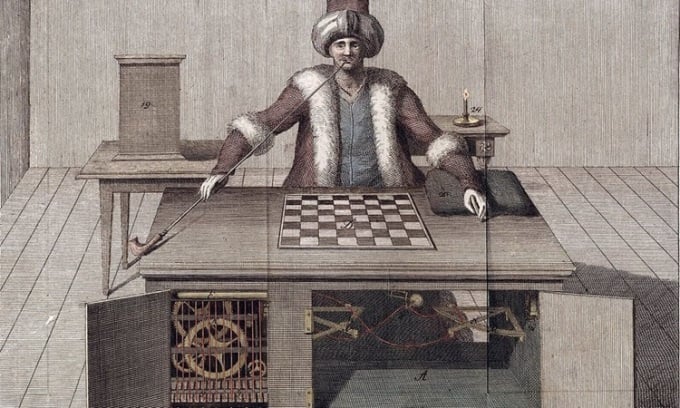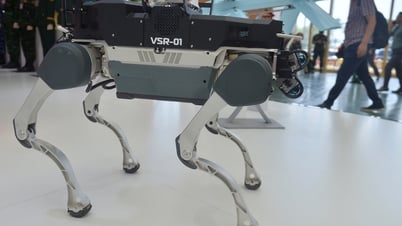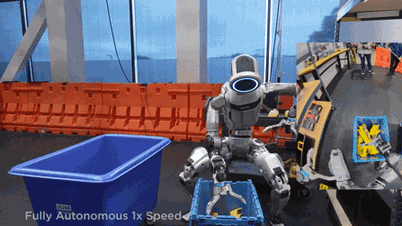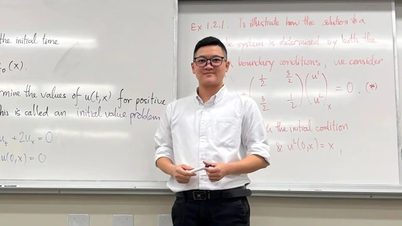Despite the controversy, the Turk chess engine created hundreds of years ago was famous all over the world .

The Turk chess machine consists of a mannequin and the machinery underneath. Photo: Amusing Planet
In the late 18th century, a Hungarian inventor named Wolfgang von Kempelen presented an unusual robot to Empress Maria Theresa of Austria. Unlike any other automated machine of the time that could perform elaborate tasks such as playing a musical instrument or writing with a pen and ink on paper, Kempelen's machine demonstrated human-like intelligence, being able to play chess with any human opponent and defeat them. This magical machine fascinated audiences across Europe and America for over a century, playing against and defeating famous figures such as Napoleon Bonaparte and Benjamin Franklin, according to Amusing Planet .
The machine, called the Mechanical Turk, consisted of a large cabinet containing a series of complex machines, topped with a chessboard. A wooden mannequin wearing an Ottoman robe and a turban sat behind the cabinet. Kempelen began the demonstration by opening the cabinet door to reveal the entire system of wheels, gears, levers, and clockwork. Once the audience was satisfied that nothing was hidden inside, Kempelen would close the door, turn the machine with a key, and invite a volunteer to play the role of the Turk's opponent.
A game begins with the Turk making the first move. It picks up the pieces with its left hand and moves them to another square before placing them down. If an opponent makes an illegal move, the Turk shakes its head and returns the offending piece to its original square. If a player tries to cheat, as Napoleon did against the machine in 1809, the Turk responds by removing the piece from the board and making its next move. When the player tries to break the rules a third time, the robot sweeps its arm across the board, knocking all the pieces down, ending the game.
Players found Turk to be exceptionally good at chess, consistently winning games against skilled players. During a tour of France in 1783, Turk played against François-André Danican Philidor, the best chess player of the time. Although Turk lost, Philidor described it as "the most tiring game he had ever played."
As the chess-playing robot became more and more popular, people began to debate how it worked. Some people believed that Kempelen's invention was actually capable of understanding and playing chess on its own. However, most people were skeptical that the machine was actually an elaborate hoax, the wooden man's movements controlled by Kempelen himself, using magnets or wires from a distance, or at least by a human operator hidden inside a cabinet. One of the most vocal skeptics was the British writer Philip Thicknesse, who wrote a treatise on the subject titled "Talking Humans and Autonomous Chess-Playing Robots: Discovered and Exposed." But Thicknesse did not provide convincing evidence.
Kempelen died in 1804, and his son sold the Turk and its secrets to Johann Nepomuk Malzel, a Bavarian musician. Mazel toured the Turk throughout Europe and America. The famous writer Edgar Allan Poe saw it in action and wrote a lengthy analysis, speculating on how the automaton worked. He argued that a true automaton would have to win all its games and display a characteristic pattern of play, such as making moves in a fixed amount of time, which the Turk failed to do. Poe concluded that the Turk must have been operated by a human.
After Mazel died in 1838, the chess-playing robot was purchased by John Kearsley Mitchell, Edgar Allan Poe's personal physician and an admirer of the Turk. He donated the machine to the Charles Willson Peale Museum in Philadelphia, where it sat in a corner, completely forgotten, until it was destroyed by fire in 1854.
The chess-playing robot remained a mystery for more than 50 years until Silas Mitchell, son of John Kearsley Mitchell, wrote a series of articles in The Chess Weekly, revealing the inner workings of the Turk. According to Mitchell, with the Turk burned to the ground, there was “no reason to hide the answer to this ancient mystery from amateur chess players.” Mitchell said the Turk was a trick by a clever magician. Inside the spacious wooden cabinet, a person operated, pulling and pushing various levers to make the mannequin on top move and play chess.
The master of the machine can hide the operator from view because the door opens only on one side to the audience, allowing him to quickly sneak inside. The pieces have small but powerful magnets attached to their bases that attract a corresponding magnet in the wires under the board and inside the box. This allows the operator inside the machine to track which piece moves where on the board.
Kempelen and the Turk's later owner, Johann Malzel, selected skilled players to secretly operate the machine at various times. When Malzel showed the machine to Napoleon at the Schonbrunn Palace in 1809, an Austrian-born German named Johann Baptist Allgaier operated the Turk robot from the inside.
In 1818, Hyacinthe Henri Boncourt, the top French player, briefly became the Turk's operator. Once, while hidden inside the automaton, Boncourt sneezed and the audience heard the sound, confusing Malzel, who quickly tried to distract them. After that, Malzel added a number of noise-making devices to the Turk, to suppress any sound that might come from the operator.
When Malzel took Turk to America for a demonstration, he hired the European chess master William Schlumberger to operate the machine. One day after a performance, two boys secretly hiding on the roof saw Schlumberger emerge from the machine. The next day, an article appeared in the Baltimore Gazette exposing the incident. Even Edgar Allan Poe noted that Schlumberger was always missing during performances but was often seen when Turk was not playing.
Despite the exposure, the fascination with the Turk chess-playing robot did not wane among the general public. Several scholars studied and wrote about the Turk in the 19th century, and many other books about the Turk were published in the late 20th century. The Turk also inspired a number of inventions and imitations, such as Ajeeb, a Turk clone created by American cabinet maker Charles Hooper in 1868. Ajeeb's opponents included Harry Houdini, Theodore Roosevelt, and O. Henry.
When Edmund Cartwright saw the Turk in London in 1784, he was intrigued and wondered whether "it would not be more difficult to build a machine that could weave cloth than one that could execute all the necessary moves in that complicated game?" Within a year, Cartwright had patented a prototype of a power-powered loom.
In 1912, Leonardo Torres y Quevedo of Madrid built the first true chess-playing automaton called El Ajedrecista, which could play a complete game with three pieces without human intervention. It took another 80 years before computers could play a full game of chess and beat the world's best players.
An Khang (According to Amusing Planet )
Source link






































































































Comment (0)